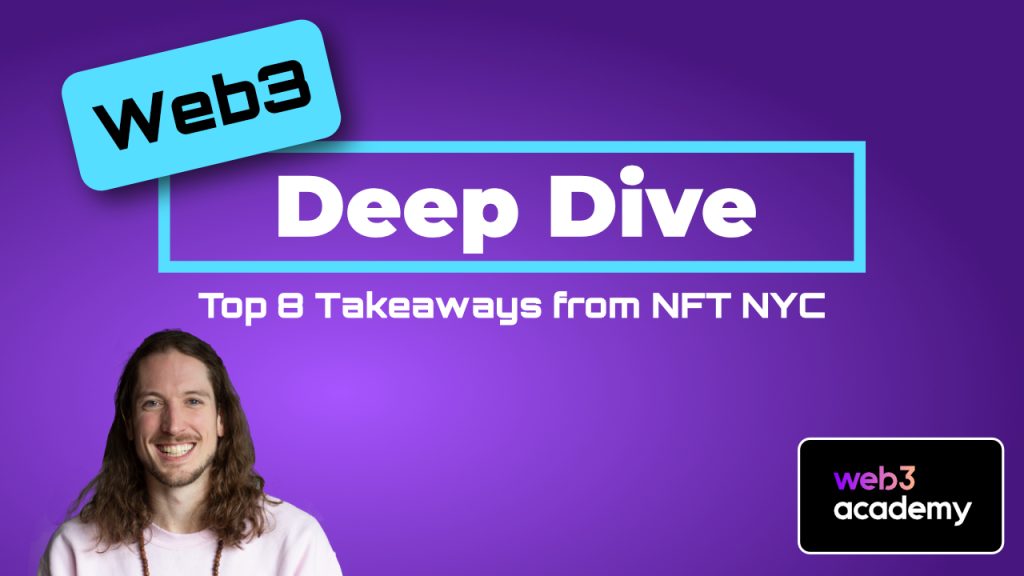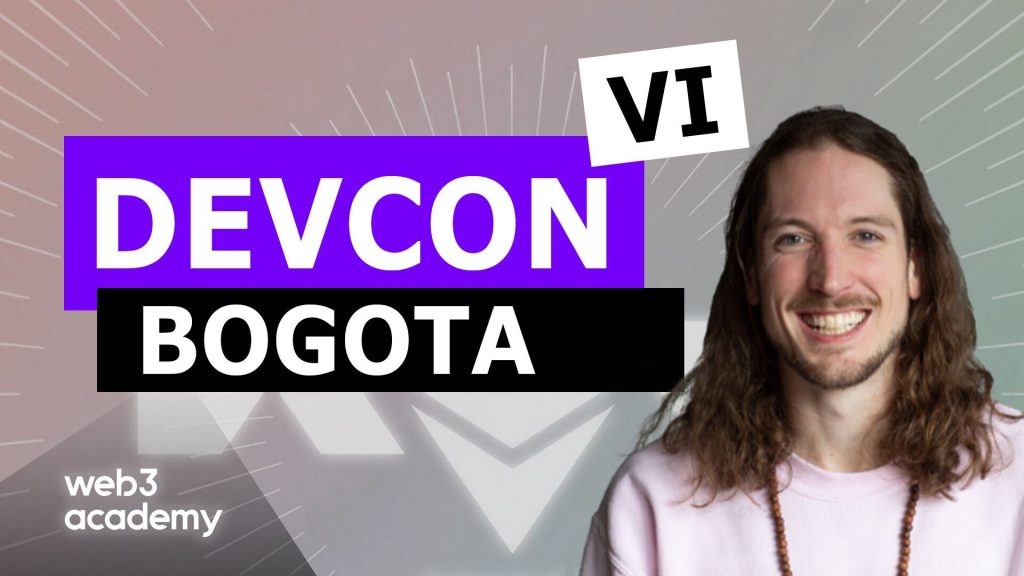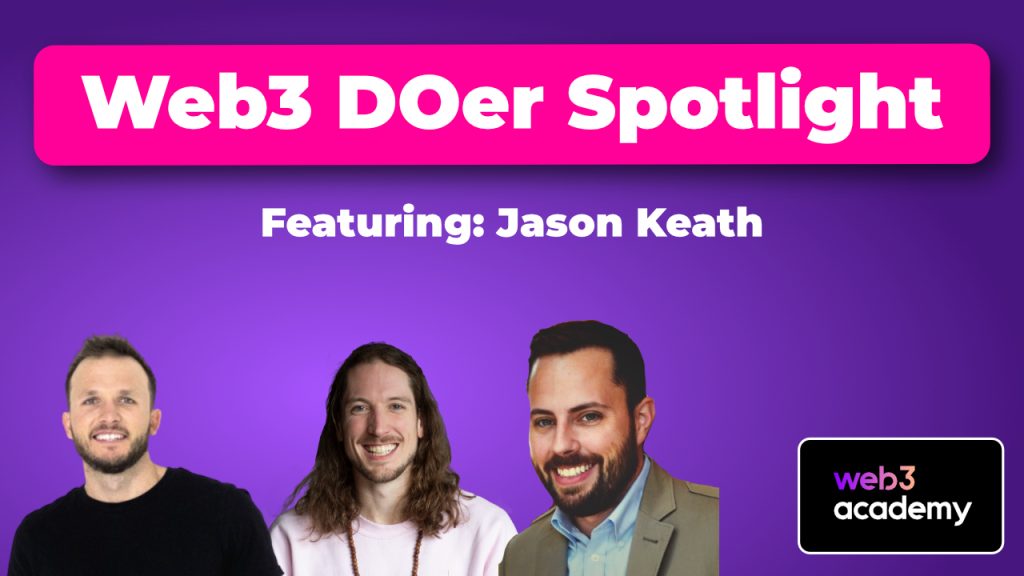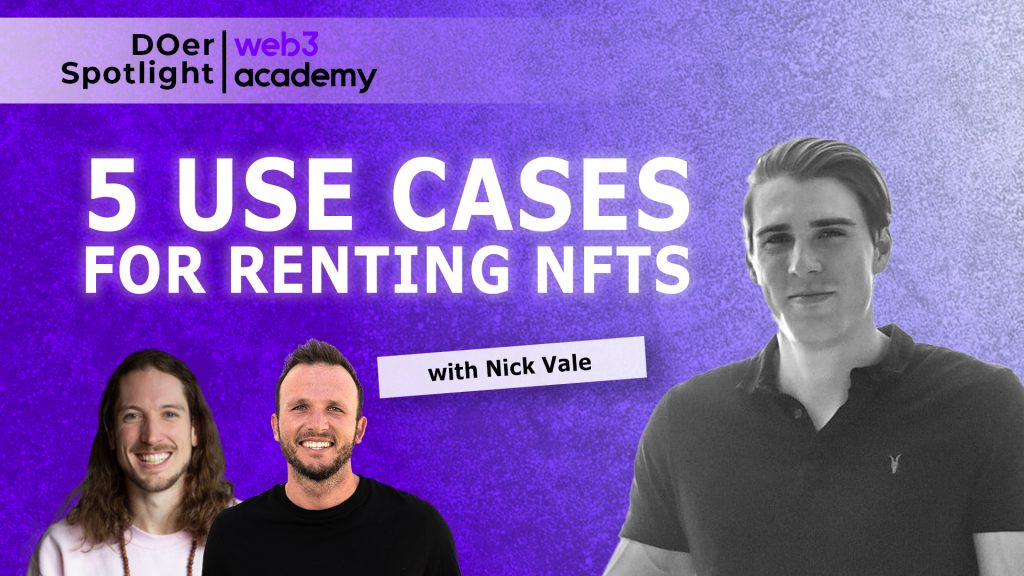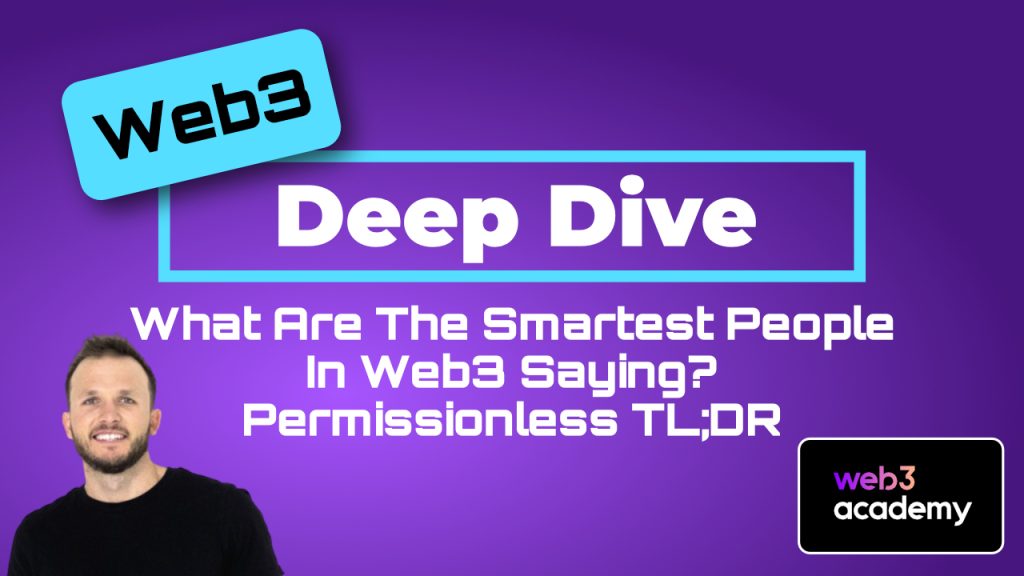
What Are The Smartest People In Web3 Saying? Permissionless TL;DR
Gm DOers!
The brightest minds of crypto and Web3 came together last week in beautiful West Palm Beach, Florida.
10,000+ people, 100+ speakers and 3 full days of panels, keynotes and presentations at the Permissionless conference put on by Blockworks and Bankless.
Below I’m going to share the top 5 key takeaways that you need to know from the conference.
But first, let me just share some thoughts on the crypto community.
If you have yet to go to a crypto conference, I highly recommend you do.
The diversity of people that attended this conference was incredible and ranged from:
- Founders and developers from all of the top blockchains and dApps (in addition to big tech like Robinhood, Visa and Google)
- To young artists and creators innovating with NFTs
- To older TradFi investors and VCs
- And everything in-between.
The one thing that everyone had in common was a pure excitement for how Web3 and crypto are going to change the world for the better.
The energy was so high that you could have never guessed that the industry is currently down 60%+ from all time highs.
I’ve always been bullish on crypto and Web3, but after this conference I’m even more bullish on the people of crypto and Web3.
Find the next crypto conference near you and go! You will not regret it.
If you prefer, you can watch the episode below, or listen on your favorite platform: Spotify | Apple Podcast | YouTube
The Top 5 Takeaways from the Permissionless Conference:
- Web3 is creating something bigger and more important than most of us realise.
- We’re in a bear market… and that’s a good thing!
- Building blockchains that scale is the #1 focus of this industry.
- The competition for Web3 wallet market share and innovation is heating up fast.
- The Ethereum merge from POW to POS is happening in August, 2022. It’s a really big deal!
I’ll dive deeper into each of these takeaways below, but first, I want to cover a few more key takeaways that didn’t quite make it into the top 5:
- UST and the Terra ecosystem was seen by many of the panelists as a reckless ticking time bomb. The name “algorithmic stablecoin” has been changed to “undercollateralized stablecoin” and their future in this industry is uncertain.
- Music NFTs are legit. Get ready for another disruption of the music industry.
- Digital identity and social media on the blockchain are going to reshape how we use the internet (super bullish on Lens Protocol and Disco.xyz… both coming on the podcast soon!).
- Web3 is tokenizing culture. This isn’t highly understood yet, but it’s a whole new dynamic we will explore further on Web3 Academy.
- Crypto conferences are amazing, but also exhausting. 9 hours/day of panels, happy hour and networking events in the evening, 3 days straight! (…I’m writing this with one eye closed)
Ok, let’s dive into the details…
1. Web3 is creating something bigger and more important than most of us realise
In the first panel of the conference, titled “Why Are We Here”, Mariano Conti (Head of Smart Contracts at Maker) from Argentina set the stage early on by saying:
“Everyone in the USA is worried about 8% inflation, however in my country we would be celebrating in the streets like we just won the World Cup if we had 8% inflation”. Mariano was referring to Argentina’s 50%+ inflation rate.
This is true of a growing number of countries all over the world right now. Our monetary system is broken and it’s impacting billions of people today in terms of inflation and financial exclusion.
Web3 is not about the potential money we can make or the flashy and cool new high-profile monkey NFTs.
Web3 is about opportunity and systemic change. Web3 is about creating a level playing field for every person in the world.
It’s about providing sound money to those whose money is being inflated away by their government.
It’s about providing permissionless banking services to everyone in the world, regardless of what country they live in.
It’s about converting the power from the big companies into the hands of the average person, in order to collectively decide upon how the internet can benefit us the most.
If you live in a developed country in the West, then a lot of what Web3 solves are things that don’t impact you significantly everyday.
Yet, in developing countries outside of the West, these are problems that citizens have been dealing with for many years. It’s hard to truly grasp the significance of it until you’ve been directly impacted by it at a level like Argentina, Turkey, Russia and many other countries are right now.
There are a lot of problems in our world, Web3 seems to be the one piece of technology that has a chance to solve many of them.
2. We’re in a bear market… and that’s a good thing!
I was surprised to hear so many people casually and confidently say that we’re in a bear market.
From my perspective it’s still undecided, but from the panelists and speakers, it seemed to be pretty clear.
Nearly every speaker at the conference has invested and built through at least one long-drawn out multi-year bear market… some of the OGs have gone through 2 or 3.
When they talked about those past experiences you could see the pain of the past in their eyes. Those were no doubt tough times for the industry, but at the same time everyone seems to be very optimistic about this bear market and the future of Web3.
The common phrases were “Bear markets are healthy”, “The industry needed this”, “Now is the time where the best new technologies are made”
Moments like this are when the tide goes out and you can see who’s swimming with no shorts on (…aka Terra). It’s when we get rid of all the leverage, the scammers and the short sighted builders just looking to capitalise on a new trend.
It’s also a time where builders can focus on building, rather than daily headlines and insane price volatility. Bear markets are the time where the industry simply GETS SHIT DONE. My favourite time… just ask the Web3 Academy and Impact Digital Marketing team 😉
Unicorn applications like Uniswap, Axie Infinity and Opensea were built in the last bear market, and Ethereum, the #1 smart contract platform enabling most of the development and activity in Web3 was built in the bear market before that.
Good things are built during these times!
There were a lot of mixed opinions on whether or not we will have a long drawn out multi-year bear market like previous ones… but it seemed as though most were leaning on the side of shorter rather than longer..
The one common theme was that this time around everyone is extremely well funded. So much money poured into this space the last 2 years that teams are well off and still hiring, whereas last bear market teams’ treasures plummeted, they were running out of money and laying off staff. The industry is maturing.
The bear market length likely depends more on the macro environment more than anything. Though there were definitely many hints and whispers that the Ethereum Merge may be the one catalyst we need to carry us out of the bear market.
Can the Ethereum Devs put the industry on their back and take us to the promise land? More on this in takeaway #5!
3. Building blockchains that scale is the #1 focus of this industry
The spiciest panel of the entire conference was titled “The Scalability Wars”.
It was a panel with founders from Layer 1 protocols like Polygon, Avalanche and Near as well as Layer 2 protocols, Optimism and Arbitrum.
The discussion was around what’s the best way to scale blockchains to billions of users.
This discussion turned into a heated (…yet civil) debate between the L1s and the L2s. The crowd was cheering, laughing and completely engaged throughout the entire conversation.
The big takeaway from it all is that building scalable blockchains that maintain the ethos of crypto (permissionless, trustless, censorship resistant, etc.) is NOT easy and has never been done before.
This is where most researchers and developers in the space are spending their time. It’s also the most important piece for the industry to figure out in order for the future we all want to actually play out.
At the moment, we have scalable blockchains (Solana, Polygon, etc.) and we have blockchains which focus on the permissionless, trustless and censorship resistance components (Ethereum and Bitcoin).
What we don’t have is both. Not yet anyway.
Real quick, here’s the two sides to the story on how researchers and developers are exploring the solution to this problem:
- A multi Layer 1 blockchain future with varying degrees of security and a variety of different scaling techniques.
- One maximally secure and decentralised settlement blockchain at the foundation with 100’s/1000’s of fast and cheap layer 2 blockchains cryptographically connecting into this chain to use it for security and settling their transactions.
In case you’re wondering who won the debate, the Layer 2s dominated the conversation and it seems like the crowd took their side as well.
It felt as though the Alt Layer 1s were like the little brother just trying to fit in.
I think it’s pretty clear that the solution to scalable, permissionless and censorship resistant blockchains is the Ethereum roadmap consisting of maximally scalable layer 2 blockchains plugging into a maximally decentralised base layer.
Not only is this roadmap significantly more decentralised, it’s also significantly more scalable (by orders of magnitude). The other point to make is that the underlying bridges connecting the Ethereum L1 and all of the L2s are built using cryptography, which removes most of the risk/centralization factors that occur in multi-chain bridges today.
For most people, this won’t really matter as regardless of which side works best, there will be another layer built overtop of all the blockchains so users will have no idea what’s under the hood and what chain they are using.
That said, if you’re wondering where to build in this space right now, the answer seemed to be pretty clear that it’s Ethereum Layer 2s (Optimism, Arbitrum, Immutable X, etc.). This is the best real estate for blockspace in the industry currently.
4. The competition for Web3 wallet market share and innovation is heating up fast
At the Permissionless conference there were a number of big announcements, most of which were around wallets.
- Robinhood announced they are launching a non-custodial Web3 wallet by the end of this year. Making for a seamless onboarding of the current 22.5 million Robinhood users into Web3
- Ledger announced they are launching a chrome browser extension for their wallet called “Ledger Connect” (…watch out MetaMask!)
- Coinbase announced that they’ve launched a new type of wallet called MPC (Multi-Party Compute) which is like a hybrid between custodial and non-custodial wallet. Essentially, it’s non-custodial enough that you still own your keys and can interact with dApps, however through cryptography there is a way in which Coinbase can help recover your seed phrase. This is great for the adoption of Web3 from new users. Check out this tweet thread for more details.
Web3 wallets are the most important tool in Web3. They are the new front page of the internet and will become everyone’s personal dashboard.
New users creating Web3 wallets is the most important metric in this space right now, as it’s what unlocks the entire ecosystem.
The network effects in Web3 are incredible because if someone creates a wallet for a Web3 game for example, they now have seamless and immediate access into DeFi, NFTs, Uniswap and every other component of Web3.
The sub categories of Web3 are all working together to onboarding new users into this space, but the wallet is the key component to it all.
We need better UX, better features and better safety. It’s all coming and it looks like the competition to innovate is really starting to heat up.
I would bet that over the next year, we’ll start to see many of the big tech companies launching new and innovative wallets. Just think about what happens to this space when Meta launches a non-custodial wallet 🤯
5. The Ethereum merge from POW to POS is happening in August, 2022. It’s a really big deal!
The last 2 panels on the last day of Permissionless were titled “The Verge Of The Merge” and “The Institutional Bullcase for ETH”.
Both of these were during the breakout sessions in the smaller conference rooms. That was a mistake, it should have been on the main stage because these rooms were packed!
Everyone crowded in to hear what Justin Drake, Researcher at the Ethereum Foundation, and the others had to say about the highly anticipated and long awaited Ethereum Merge.
Good news friends. It looks like the merge will finally happen in August, 2022!
Of course bugs can happen and delays can occur so it’s not 100%, but he and the rest of the devs feel confident in their progress and said that “it’s highly likely that the merge will happen in August.”
At this point the devs say that Merge tests are going seamlessly. They will begin merging the testnets over on June 8th, 2022, in which there are 3 testnets to merge over before finally merging mainnet (the live Ethereum blockchain currently settling trillions of dollars/year).
So why is this such a big deal?
- Merging the security system of a live blockchain, settling trillions of dollars/year from proof of work to proof of stake is probably the biggest technological feat in crypto’s history, outside of the birth of Bitcoin.
- The complaints about crypto, NFTs and Web3 using too much energy and being bad for the environment will be silenced.
- ETH (the token/asset) will become the first deflationary asset in crypto and Ethereum becomes the first ever profitable blockchain in the space.
I’m not going to get into the full details of how the merge impacts the tokenomics of ETH, but I highly recommend you read this article and watch this video from Bankless to learn more.
The tl;dr is this.
After the merge the supply and demand of ETH change significantly. The supply of ETH will drop drastically and the demand will increase considerably. At the same time, because of the set up of the merge anyone who has staked is unable to remove or sell their assets or their staked earnings for approximately 6 months after the merge.
Ultimately, this creates the greatest supply shock this industry will ever see. It has been dubbed the “triple halving” which refers to the 4 year halving of the inflation rate of Bitcoin.
This industry has seen 3 bull markets kicked off due to the supply shock of a Bitcoin halving. In august, Ethereum will undergo the equivalent of 3 halvings all at once. At a time where adoption of crypto and Web3 on Ethereum is going exponential.
This is a very big deal and from the discussions at Permissionless, it may be the one thing that can pull us out of a bear market, even if the macro environment doesn’t play in our favor!
Exciting times ahead!
Final Thoughts:
If the bulk of your crypto and web3 consumption and learnings comes from Twitter, podcasts and Youtube then you need to attend a conference.
It hits different to meet people and learn from people in the flesh.
The discussions are more real as it brings everyone back to the basics and the fundamentals.
It allows you to see who are the people on the other side of these crazy Twitter accounts yelling “Buy the Dip!”, “HODL” and “WAGMI”.
It allows you to see who are these people building the protocols and apps that you use and learn about everyday.
And it allows you to see and understand that what we are building in Web3 is truly revolutionary.
What a time to be alive!
Kyle Reidhead
Founder of Web3 Academy & Impact Digital Marketing
Twitter
Want to Join the Web3 Academy Community?
What if I told you there was an exclusive NFT-gated Discord community for entrepreneurs, creators and marketers staying on the forefront of Web3 innovation? Would that be something you’re interested in?
The Web3 Academy Community Member NFT is FREE but you need to first apply below and then claim your NFT to join the Discord.
...shoutout to the Web3 DOers already inside, I see you!

